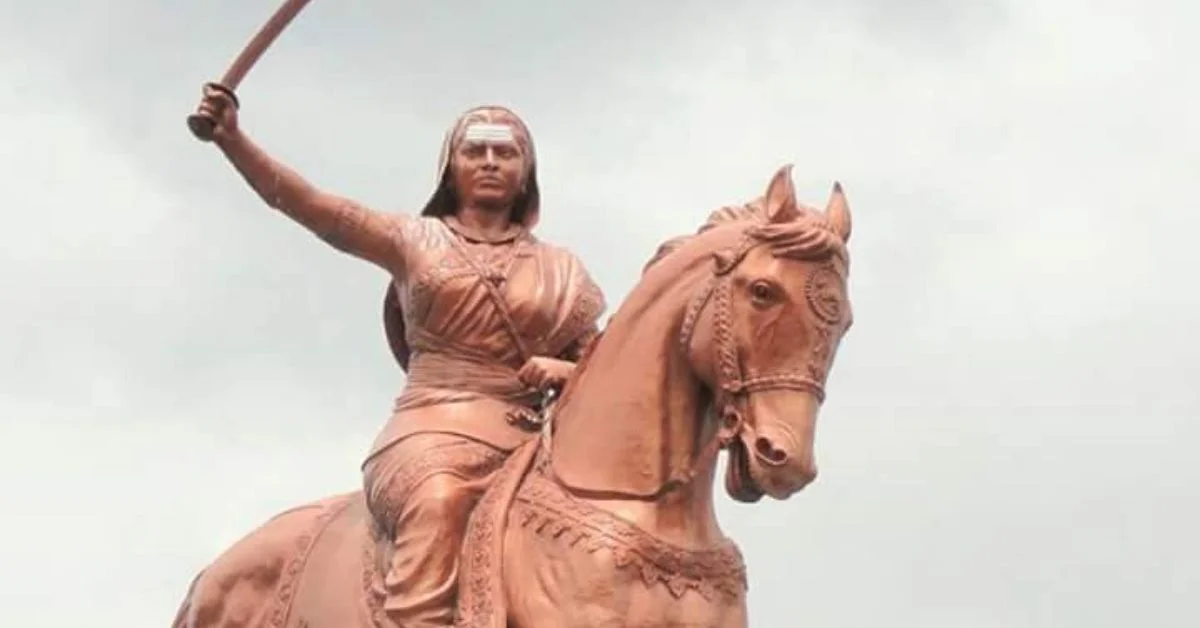Important Facts For Prelims
Rani Chennamma of Kittur
- 27 Oct 2025
- 4 min read
Why in News?
The Government of India marked 200 years of Rani Chennamma’s historic victory at Kittur (1824) with the release of a special Rs 200 commemorative coin celebrating her courage and leadership against British rule.
Who was Rani Chennamma?
- Early Life: Rani Chennamma was born on 23rd October 1778, in Kakati village (Belagavi district, Karnataka) to a Lingayat family.
- She was trained in horse riding, sword fighting, and archery from a young age.
- She married Raja Mallasarja of Kittur and later became queen after his death in 1816.
- Revolt of Kittur (1824): After her husband and son’s death, she adopted Shivalingappa as heir to the Kittur throne.
- The British East India Company refused to recognize the adoption, attempting to annex Kittur, an early instance of what later became the Doctrine of Lapse.
- Rani Chennamma refused to surrender and led an armed rebellion against British officer John Thackery, defeating him in the first battle.
- However, the British retaliated with a larger force under Colonel Deacon, captured the fort, and imprisoned her at Bailhongal Fort, where she died in 1829.
- Legacy: She is one of India’s earliest freedom fighters, preceding the Revolt of 1857 by over three decades.
- Rani Chennamma is revered as a symbol of courage, justice, and women-led resistance against colonial rule in Karnataka and beyond.
- Her story lives on through folk songs (Janapada), ballads, and theatre, along with the annual Kittur Rani Chennamma Utsav.
Doctrine of Lapse
- The Doctrine of Lapse, introduced by Governor-General Lord Dalhousie, allowed the British East India Company to annex any princely state under its control if the ruler was deemed incompetent or died without a male heir.
- As per this, any adopted son of the Indian ruler could not be proclaimed as heir to the kingdom.
- By applying the doctrine of lapse, Dalhousie annexed the States of Satara (1848 A.D.), Jaitpur, and Sambalpur (1849), Baghat (1850), Udaipur (1852), Jhansi (1853), and Nagpur (1854).
Frequently Asked Questions (FAQs):
1. Who was Rani Chennamma?
Rani Chennamma was the queen of Kittur in present-day Karnataka, known for leading the Kittur Revolt of 1824 against the British East India Company.
2. What triggered the Kittur Revolt of 1824?
The British refusal to recognize her adopted son Shivalingappa as heir to the Kittur throne led to the revolt—an early example of opposition to the Doctrine of Lapse.
3. Who introduced the Doctrine of Lapse and why?
Lord Dalhousie introduced the Doctrine of Lapse to annex states whose rulers died without a male heir, denying the right of adoption.
UPSC Civil Services Examination, Previous Year Questions (PYQs)
Prelims
Q. What was/were the object/objects of Queen Victoria’s Proclamation (1858)? (2014)
- To disclaim any intention to annex Indian States
- To place the Indian administration under the British Crown
- To regulate East India Company’s trade with India
Select the correct answer using the code given below:
(a) 1 and 2 only
(b) 2 only
(c) 1 and 3 only
(d) 1, 2 and 3
Ans: (a)







